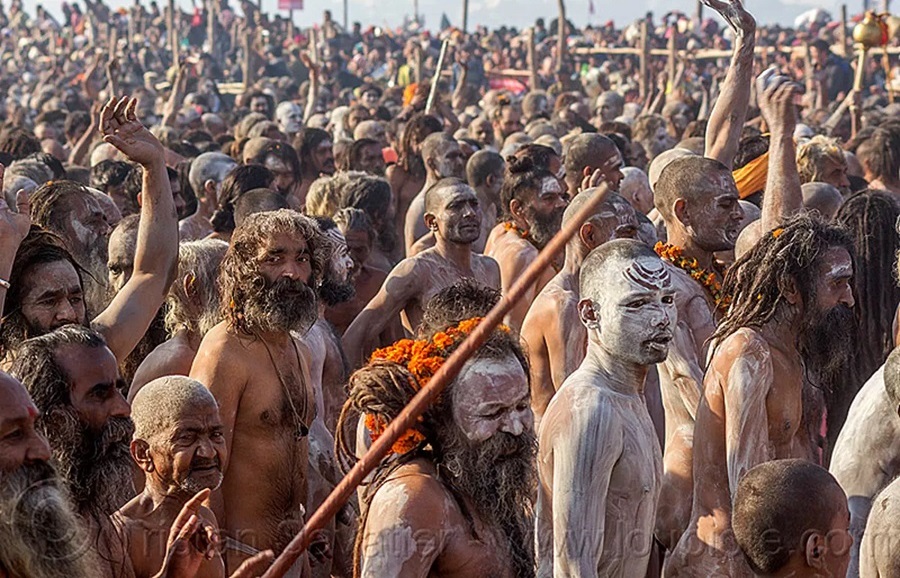Kumbh Mela 2025 is poised to be one of the most monumental gatherings of faith and spirituality globally. Occurring in four major cities in India—Prayagraj (Allahabad), Haridwar, Ujjain, and Nashik—this ancient festival of Hinduism attracts millions of pilgrims, ascetics, and tourists from all corners of the world, converging to celebrate spirituality, cultural heritage, and the deeply rooted traditions of India. In 2025, the event is scheduled to take place in Prayagraj, the city known for its historical significance as the confluence (Triveni Sangam) of three sacred rivers: the Ganges, Yamuna, and the mythical Saraswati.
Here’s a detailed look at what to expect at the Kumbh Mela 2025, its origins, rituals, significance, and the impact it has on India and the world.
Origins of Kumbh Mela
The origins of Kumbh Mela are traced back to the ancient scriptures of Hindu mythology, particularly the Puranas. The festival revolves around the legend of the churning of the ocean of milk (Samudra Manthan) by the gods and demons, who sought the nectar of immortality (amrit). During the churning, the nectar spilled at four places on earth—Prayagraj, Haridwar, Ujjain, and Nashik. These locations are now sanctified as pilgrimage sites, where the Kumbh Mela is held at intervals, based on planetary positions.
The word "Kumbh" refers to a pitcher, symbolizing the pot containing the nectar, while "Mela" means fair. Thus, Kumbh Mela is the "fair of the pot," representing the holy gathering to seek blessings and attain spiritual purity by taking a sacred dip in the rivers where the nectar fell.
Timing and Significance of Kumbh Mela 2025
The Kumbh Mela in Prayagraj follows a 12-year cycle, with additional significance placed on celestial alignments. The Mela’s schedule is based on the positioning of the Sun, Moon, and Jupiter in certain zodiac signs. In 2025, the Mela will commence during the auspicious period when these celestial bodies align to magnify the river’s sanctity and create an atmosphere highly conducive to spiritual practices.
The importance of Kumbh Mela lies in its core belief of achieving moksha (liberation from the cycle of birth and death) by purifying oneself of sins through rituals, prayers, and bathing in the holy river. Pilgrims believe that during the Mela, the rivers are infused with divine energy, making them a source of spiritual strength.
Major Highlights of Kumbh Mela 2025
- The Holy Dip (Snan): The ritual of taking a dip in the sacred waters at the Triveni Sangam is one of the central aspects of Kumbh Mela. According to belief, the holy dip washes away sins, grants purification, and brings one closer to salvation. Special dates known as Shahi Snan are designated for mass bathing, where saints, spiritual leaders, and common pilgrims come together to take part in this powerful ritual.
- Religious Assemblies and Discourses: The Mela also offers a unique platform for religious discourse. Saints, sages, and spiritual leaders from various sects come to share knowledge, engage in discussions on philosophy, and teach spiritual practices. The Kumbh Mela thus serves as a living university of Hindu philosophy and Indian spirituality.
- Naga Sadhus: A distinctive aspect of the Kumbh Mela is the gathering of Naga Sadhus, the warrior monks who are known for their asceticism, often seen wearing minimal clothing or none at all, smeared in ash, and carrying tridents. These sadhus belong to various akharas (religious organizations) and lead the Shahi Snan, symbolizing the congregation’s spiritual fervor.
- Art and Culture: Kumbh Mela also showcases India’s cultural heritage through music, dance, art exhibitions, and storytelling. Folk artists, artisans, and cultural troupes gather to share their crafts and celebrate the diversity of Indian traditions, providing a glimpse of India’s vast cultural landscape.
Preparations and Infrastructure for Kumbh Mela 2025
Given the colossal scale of Kumbh Mela, extensive preparations are undertaken by the Indian government and local authorities. A temporary city with makeshift housing, sanitation, security arrangements, medical facilities, and supply chains is established to cater to the needs of millions of attendees. The government collaborates with spiritual organizations, social workers, volunteers, and local communities to ensure the event’s smooth functioning. In recent years, digital technology has also been integrated into the event, with apps providing information on schedules, safety guidelines, and location tracking to enhance the pilgrims' experience.
Kumbh Mela's Global Impact and Significance
Kumbh Mela holds the prestigious title of being recognized by UNESCO as an Intangible Cultural Heritage of Humanity. It is a symbol of India’s rich spiritual heritage and the power of faith, which transcends cultural and national boundaries. Every Kumbh Mela witnesses a growing number of international visitors drawn to experience the magnitude of India’s spiritual legacy, thereby promoting cultural exchange and tourism.
On a deeper level, Kumbh Mela is a celebration of the unity and diversity that characterize Hinduism. It highlights the power of faith, the importance of collective spirituality, and the strength derived from a shared belief in the divine. Pilgrims return with not only the hope of spiritual upliftment but also a renewed sense of community and an appreciation for the diversity of human experience.
What to Expect and Experience in Kumbh Mela 2025
As the grand festival draws near, pilgrims and travelers can anticipate a spectacle of devotion, filled with vibrant colors, music, and rituals. The chants, the holy dip, the myriad of devotees, and the enlightening discourses together create an unforgettable atmosphere. Kumbh Mela 2025 promises a convergence of people from varied walks of life, all united by their quest for peace, faith, and self-discovery.
Whether you’re attending for religious devotion, cultural exploration, or personal reflection, Kumbh Mela 2025 offers a profound experience and insight into one of humanity's oldest traditions, a rare glimpse into an undying faith that has transcended millennia.





Comments